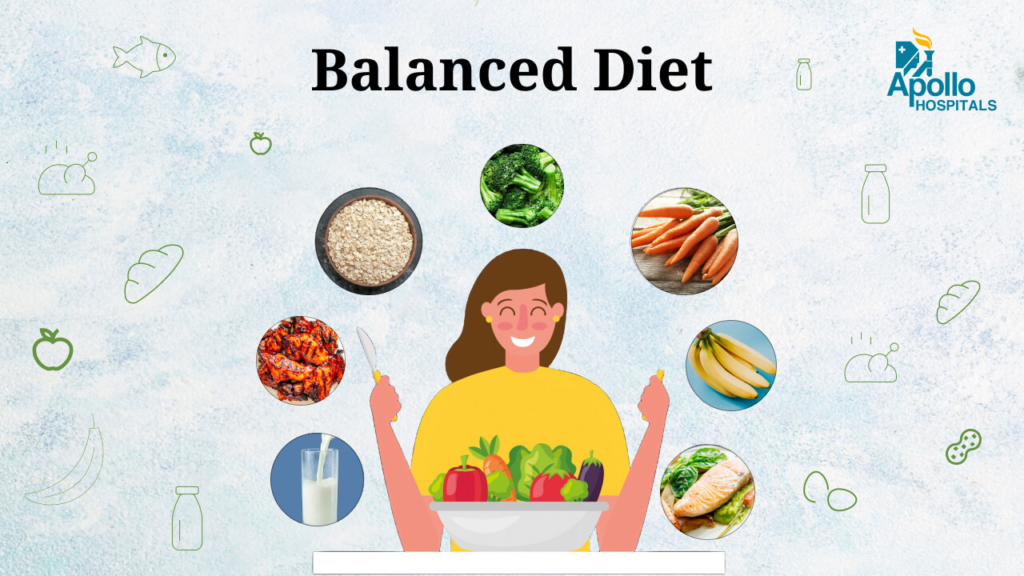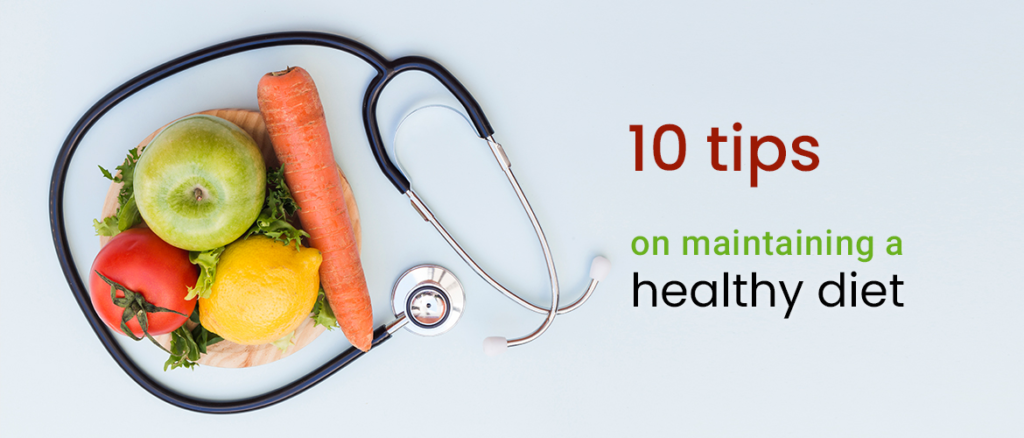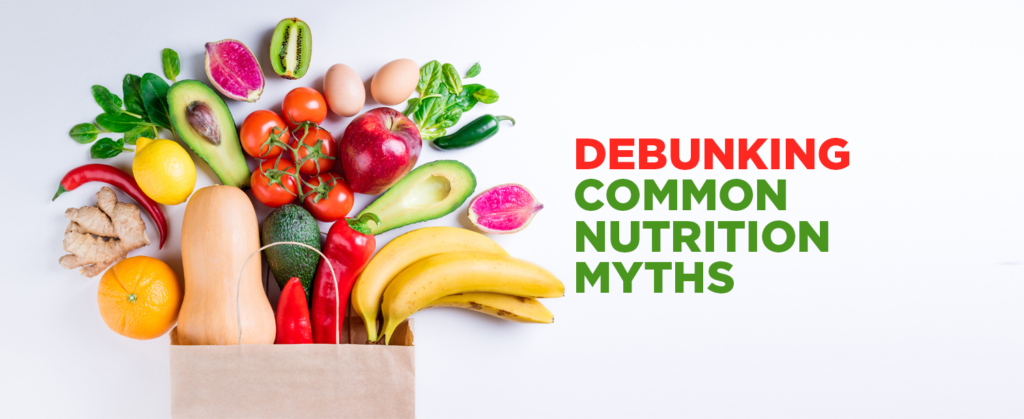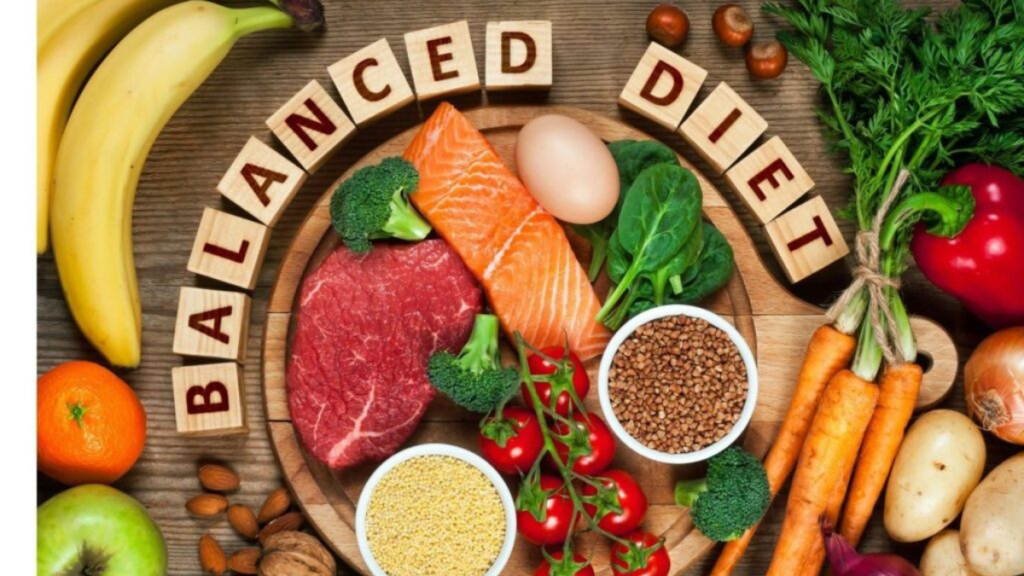Discover how to achieve optimal health with our detailed guide to a balanced diet. Learn essential nutrients, food groups, eating tips, and expert FAQs for healthy living.
also read: https://babessproduct.com/the-evolution-of-laser-vision-correction-techniques/
Introduction
Healthy living starts with what you put on your plate. In today’s fast-paced world, many people rely on processed foods, sugary snacks, and quick meals. However, without balanced nutrition, it becomes challenging to maintain energy, support immunity, and prevent chronic disease. This article serves as your guide to a balanced diet: nutrition for healthy living, offering actionable tips, essential information, and a path toward improved well-being.
What is a Balanced Diet?
A balanced diet provides the body with all the essential nutrients—carbohydrates, proteins, fats, vitamins, and minerals—in the right proportions. It fuels bodily functions, supports growth and repair, and helps maintain optimal health. Think of it as a daily nutritional puzzle where each piece contributes to your overall wellness.

Components of a Balanced Diet
Let’s explore what makes up a balanced diet:
| Nutrient | Role in the Body | Good Sources |
|---|---|---|
| Carbohydrates | Primary energy source | Whole grains, fruits, vegetables |
| Proteins | Builds and repairs tissues | Lean meats, legumes, dairy |
| Fats | Supports cell function, absorbs vitamins | Nuts, seeds, olive oil, fish |
| Vitamins | Regulates bodily processes and immunity | Fruits, vegetables, fortified foods |
| Minerals | Builds bones, teeth, and helps metabolism | Leafy greens, dairy, whole grains |
| Water | Maintains hydration and regulates body temperature | Water, fruits, soups, vegetables |
A healthy diet includes all of these nutrients in appropriate quantities, with limited intake of added sugars, salt, and saturated fats.
The Importance of Balanced Nutrition for Healthy Living
The benefits of balanced nutrition go far beyond weight management. Here’s how eating well affects your life:
- Boosts energy levels: Nutrient-rich foods improve stamina and mental clarity.
- Improves immunity: Vitamins and antioxidants help protect against infections.
- Supports digestive health: Fiber-rich foods enhance gut function.
- Promotes heart health: Balanced fat intake reduces bad cholesterol.
- Helps with weight control: A balanced diet reduces the temptation to overeat.
Following your guide to a balanced diet: nutrition for healthy living ensures that your body receives what it needs to thrive every day.
Daily Caloric Needs and Nutrient Ratios
Caloric and nutrient needs vary depending on age, gender, activity level, and health goals. Below is a basic breakdown for an average adult:
| Nutrient Group | Recommended Daily Intake (General Guideline) |
|---|---|
| Carbohydrates | 45–65% of total calories |
| Protein | 10–35% of total calories |
| Fat | 20–35% of total calories |
| Fiber | 25g for women / 38g for men |
| Water | 2–3 liters per day |
Tracking your macronutrients and hydration can significantly improve how you feel and perform throughout the day.
Tips for Maintaining a Balanced Diet
Eating balanced meals doesn’t require complicated diets or expensive foods. Here are simple strategies to help:

1. Follow the “Plate Method”
Divide your plate:
- Half with vegetables and fruits
- One-quarter with lean protein
- One-quarter with whole grains
This visual guide helps ensure variety and proportion in your meals.
2. Eat Mindfully
Chew slowly, savor your food, and avoid distractions like screens while eating. Mindful eating supports better digestion and satisfaction.
3. Plan and Prep Meals
Meal planning ensures you stick to a healthy routine. Prepare meals ahead to avoid unhealthy, last-minute food choices.
4. Limit Sugar and Salt
Too much added sugar or sodium can lead to serious health conditions. Use herbs, spices, or citrus to enhance flavor naturally.
Superfoods That Boost Nutrition for Healthy Living
Incorporating superfoods into your routine can give your diet an extra nutritional edge. Consider adding:
- Berries – Rich in antioxidants and fiber
- Spinach and Kale – Packed with iron and vitamins
- Quinoa – High in protein and gluten-free
- Chia Seeds – Omega-3s and fiber-rich
- Salmon – Loaded with heart-healthy omega-3 fatty acids
- Sweet Potatoes – High in vitamin A and fiber
- Greek Yogurt – Probiotics and protein
These nutrient-dense options enhance your meals while supporting your health goals.
Balanced Diet for Different Life Stages
Nutritional needs evolve with age and lifestyle. Here’s a quick look:
Children and Teens
Require higher levels of protein, calcium, and iron for growth and development.
Adults
Need a steady intake of all macronutrients with a focus on fiber, heart-healthy fats, and portion control.
Seniors
Should consume foods rich in calcium, vitamin D, B12, and hydration, as appetite may decrease with age.
Pregnant and breastfeeding women, athletes, and individuals with chronic health conditions may need personalized dietary plans.
Common Misconceptions About Balanced Diets
Many myths surround nutrition. Here are a few debunked:

- Myth: All fats are bad.
Truth: Healthy fats (like those in avocados and nuts) are essential for brain and heart function. - Myth: Carbs cause weight gain.
Truth: Whole carbs like brown rice and oats are important for energy. - Myth: Skipping meals helps lose weight.
Truth: Skipping meals often leads to overeating later and metabolic imbalance.
Understanding nutrition facts from fiction is vital for long-term healthy living.
Sample One-Day Balanced Diet Plan
Here’s a practical example of what a nutritious day might look like:
| Meal | Food Items |
|---|---|
| Breakfast | Oatmeal with berries and almonds + green tea |
| Snack | Greek yogurt with honey and chia seeds |
| Lunch | Grilled chicken salad with olive oil dressing + quinoa |
| Snack | Apple slices with natural peanut butter |
| Dinner | Baked salmon, steamed broccoli, and sweet potato |
| Hydration | Water with lemon throughout the day |
This menu includes fiber, protein, good fats, and essential vitamins—offering a great model to follow daily.
FAQs on Balanced Diets and Nutrition
Here are 10 frequently asked questions not yet covered in the content:
- How can I tell if my diet is unbalanced?
Fatigue, mood swings, frequent illness, and digestive issues can be signs. - Can a vegetarian diet be balanced?
Yes, with careful planning to include plant-based proteins, B12, and iron. - Is eating three meals a day necessary?
Not always—what matters is total nutrition intake and meal spacing. - Are supplements necessary in a balanced diet?
Ideally, no. But supplements can help if you have deficiencies or restrictions. - Is dairy essential for calcium?
Not necessarily—leafy greens, fortified foods, and tofu are good alternatives. - Can I have cheat meals in a balanced diet?
Yes, moderation and consistency matter more than occasional indulgences. - What’s the best way to start eating healthy?
Begin by adding more whole foods and reducing processed items gradually. - Are plant-based diets suitable for athletes?
Absolutely, if protein and calorie needs are met through legumes, nuts, and grains. - How does stress affect dietary choices?
Stress often leads to emotional eating and poor food choices. Mindfulness helps. - Is intermittent fasting compatible with balanced eating?
It can be, as long as nutrient needs are met during eating windows.
Conclusion
Achieving and maintaining good health doesn’t require a complicated formula—just the right knowledge and consistency. This article has served as your guide to a balanced diet: nutrition for healthy living, offering everything from core nutrients and food groups to meal plans and superfoods. By making small, consistent choices, you can transform your health and vitality through food.
Start with what you have, eat mindfully, and aim for variety and balance in every meal. With dedication and awareness, healthy living can become your everyday reality.
also read: https://babessproduct.com/what-are-custom-orthotics/
also read: https://babessproduct.com/invisalign-vs-traditional-braces/

